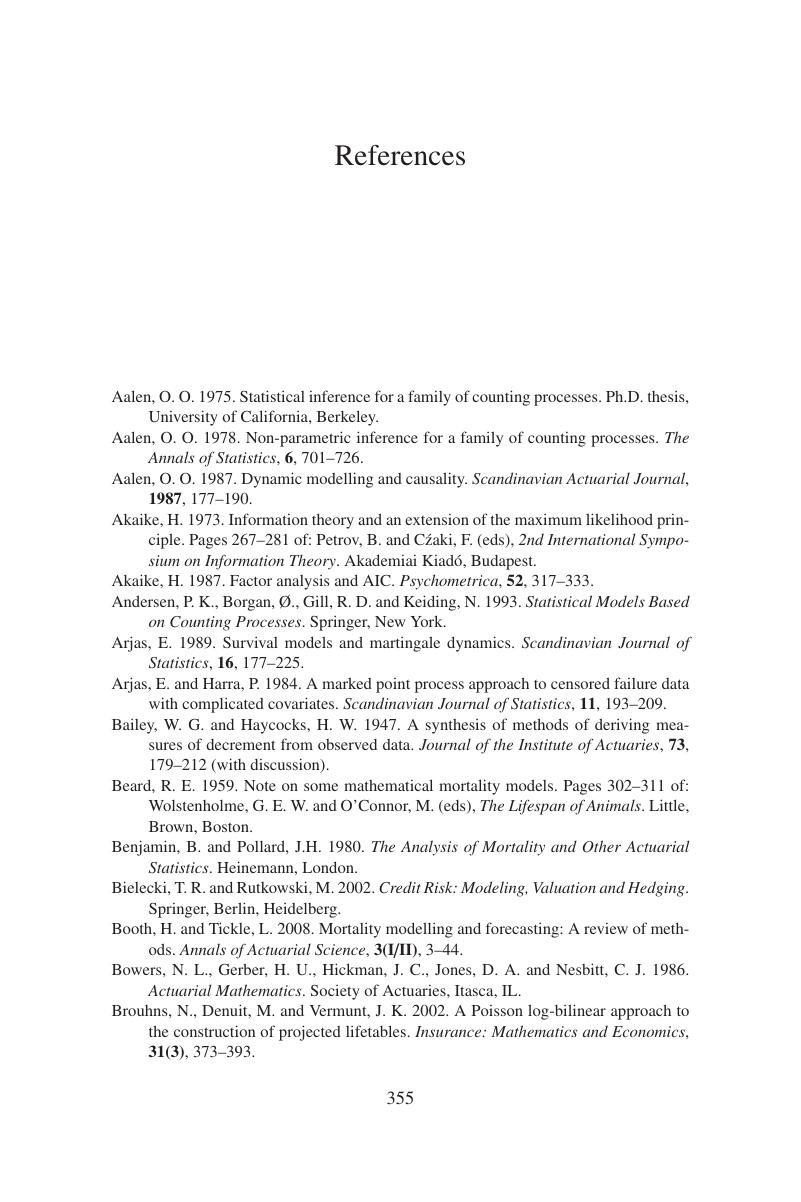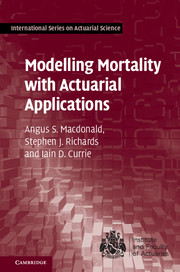Book contents
- Frontmatter
- Contents
- Preface
- Part One Analysing Portfolio Mortality
- Part Two Regression And Projection Models
- Part Three Multiple-State Models
- Appendix A R Commands
- Appendix B Basic Likelihood Theory
- Appendix C Conversion to Published Tables
- Appendix D Numerical Integration
- Appendix E Mean and Variance-Covariance of a Vector
- Appendix F Differentiation with Respect to a Vector
- Appendix G Kronecker Product of Two Matrices
- Appendix H R Functions and Programs
- References
- Author Index
- Index
- References
References
Published online by Cambridge University Press: 28 April 2018
- Frontmatter
- Contents
- Preface
- Part One Analysing Portfolio Mortality
- Part Two Regression And Projection Models
- Part Three Multiple-State Models
- Appendix A R Commands
- Appendix B Basic Likelihood Theory
- Appendix C Conversion to Published Tables
- Appendix D Numerical Integration
- Appendix E Mean and Variance-Covariance of a Vector
- Appendix F Differentiation with Respect to a Vector
- Appendix G Kronecker Product of Two Matrices
- Appendix H R Functions and Programs
- References
- Author Index
- Index
- References
Summary

- Type
- Chapter
- Information
- Modelling Mortality with Actuarial Applications , pp. 355 - 360Publisher: Cambridge University PressPrint publication year: 2018



